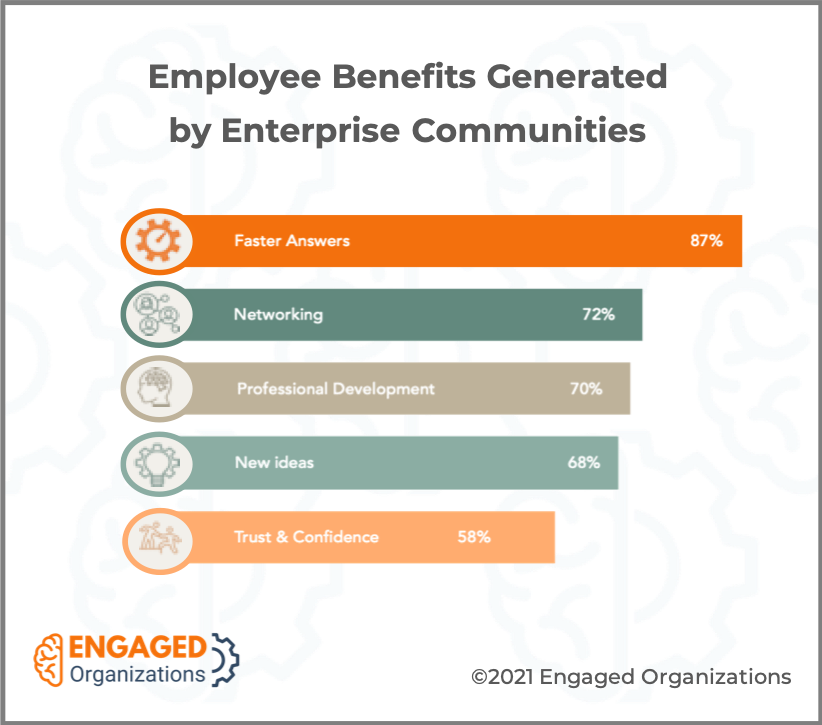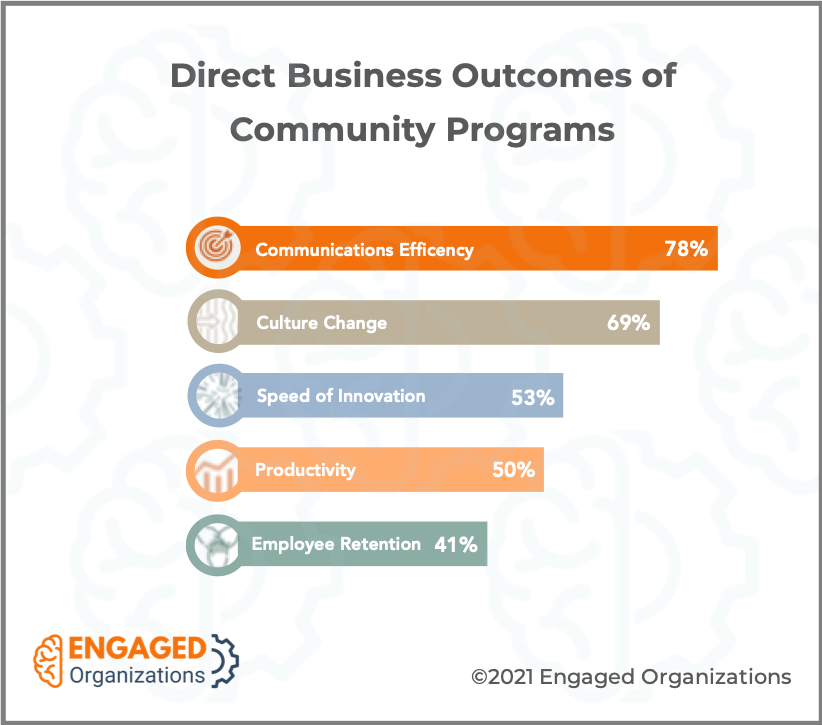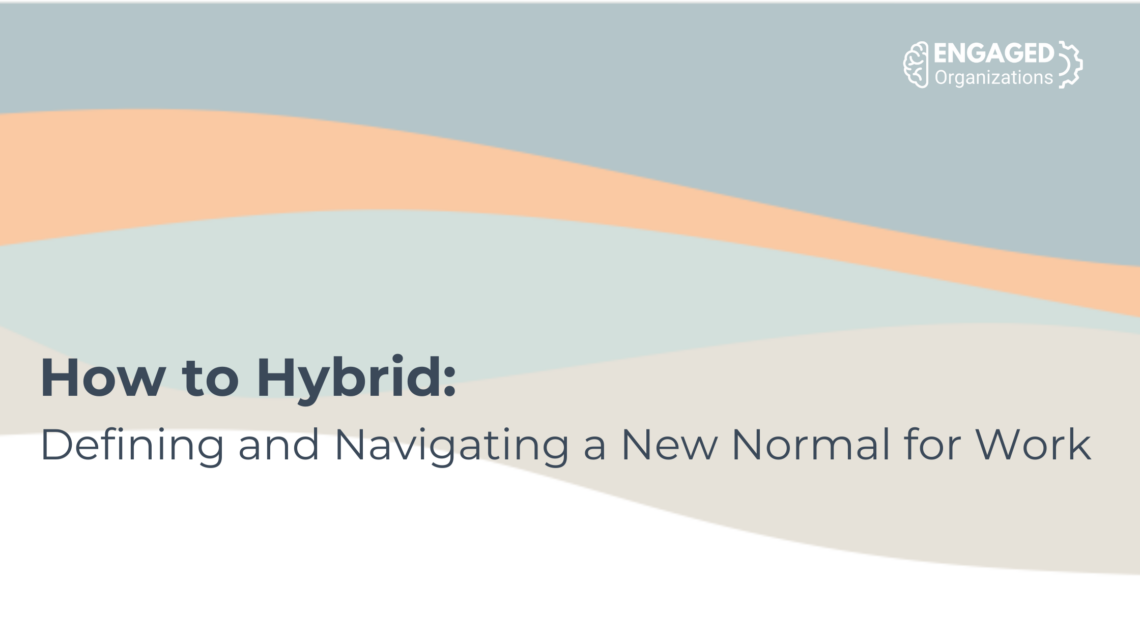Work Is a Mess; Exposed by COVID

For many years, we as an economy have largely ignored this conflation of these complex influences; metaphorically holding our breath and hoping people figured out how to make the traditional (read: outdated) model of organizational governance and employment work. The strain of that ignorance has fallen mostly on those who were already in disadvantaged positions and like many complex systems challenges, we implicated individuals for problems they had no control to address. It is a big part of why, even after years of attention and Chief Diversity Officers, sexism and racism in organizations persist.
In short, work is a mess.
Hope Is Not a Strategy
This is, perhaps, why there are seemingly so many job openings while the most talented leaders I know sit on the sidelines, looking for something more inspiring.
Managers Are on the Front lines of Adapting to a New “Normal”
So how do you change a complacent, risk-averse organization? The plane is still flying; you cannot put things on hold and start from scratch.
Adaptation is a better conceptual model than change; adaptation suggests an iterative, ongoing process where new practices emerge while old practices fade away. The organization has to learn, grow, and adapt together; it’s an ongoing conversation and practice rather than a one-time switch. Employees at every level need to be brought along to succeed. The organization needs to learn to balance stability with sustainability; between repeatability and experimentation; between revenue and investment.
For every organization, this new balance will be dynamic and what it looks like will change over time. What that means for individuals and teams is learning to balance by constantly shifting between responsibilities and opportunities. Because of its ever-shifting dynamic, it requires a different approach to how work is managed. Every employee will need to understand needs and options and made decisions contextually about how to balance each. It’s an environment where work cannot be dictated or decided by others.
Managers are on the front lines because they are the ones who have a pressing need to change how work gets done, but with few of the skills and tools to do so. Microsoft’s Great Expectations report revealed that while everyone is looking to managers, 74% of managers say they do not have the influence or resources to support changes – and 54% of them think their organizational leaders are out of touch. Ouch.

As luck would have it, there is a small cadre of individuals who have years of experience and expertise in changing the dynamics of how work gets accomplished: community strategists, program owners, and managers. Community management is an approach to management that distributes responsibility and access rather than centralizing it. Community approaches work to ensure that everyone has access to organizational priorities, context, and expertise. Instead of being arbiters of what work gets done by whom, community managers empower individuals to determine their work and pursue what they need without going through bottlenecks created by hierarchical management chains. This community-centric governance model increases the speed of information sharing, social norms new behaviors, and information, while at the same time empowering, supporting, and challenging employees to be accountable.

For traditional managers and executives, this approach seems at best unpredictable and at worst chaotic. Without professional community management expertise, it very often is. Done well, however, enterprise communities show considerable potential to solve some of the vexing, complex challenges organizations face in adapting to the new ‘normal’ environment, especially as we redefine how work happens as we go. Communities empower employees to take initiative, work more efficiently, build bigger professional networks, and learn more quickly. That translates to outcomes for which organizations are looking: efficiency, change, innovation, and more.
The Future of All Management Is Community Management

What we’ve learned from working remotely during the pandemic is that the control and oversight approach to management is impossible without invasive surveillance, which hinders trust and collaboration. Remote teams, however, require more explicit efforts to help employees feel connected, build relationships, and trust their colleagues and without it, team output declines while stress increases. We could have always benefited from more explicit efforts in these areas but remote work made it painfully clear that our cultural strength frays when social and cultural health is left to chance.
Managers are scrambling to figure out what Hybrid work means and what it looks like in reality. They feel enormous pressure to figure this out and get it right. On their own, however, managers cannot figure out what hybrid work looks like for their team. Too many of the collaboration issues, challenges, skills, and preferences have gone unspoken and therefore unseen and unaddressed because it has not been explicitly managed. It will require a lot of reflection, discussion, and compromise – not about the work itself but about HOW to work. For most managers, these types of conversations are not an explicit responsibility and not something for which they were trained. In many organizations, these types of social-emotional conversations are intentionally avoided with the thought that they do not impact work, which, on its own reveals something inherently lacking in management thinking.
Understandably many managers are anxious about wading into these conversations because of their lack of experience and confidence in facilitating them. They can be challenging but they don’t need to be as intense as one might imagine. These issues sit at the core of building high functioning, collaborative, and innovative teams. The future of management will be more oriented around fostering a psychologically safe team than it will be focused on managing tasks and overseeing work. Management will look more like what we currently think of as community management.
Community managers think about their role in conversations and decision-making differently than traditional managers. Instead of considering themselves to be responsible for solving problems, they see their responsibility as convening and facilitating the conversations that need to happen – and empowering individuals to work through their problems collaboratively. This does two very important things: it relieves the manager of feeling like they have the responsibility to have answers and it empowers individuals and the team as a whole to create solutions to which they can commit. Together, those conversations generate enormous energy, engagement, and a sense of potential. People feel seen and heard but also accountable to each other to deliver on their commitments and work collaboratively. The change in emotional tenor and engagement is dramatic – and is the start of changing mindsets and organizational culture.
A Community Management Resource for Teams
In starting Engaged Organizations my hope is to contribute to the evolution of management, leadership, and organizational culture by applying the techniques of community strategy and management to organizational strategy and management. One of the simplest ways to support change is by providing tools, language, and prompts for managers and teams; to literally give them words to use and questions to ask.

No individual and no team will have the same set of needs – or the same solutions – to collaboration. What everyone today shares is an overflow of information from multiple channels and platforms. It is creating overwhelming information chaos. The only way to address this chaos is to have networks (teams, communities, or companies) agree together on how they will work and collaborate. These shared work agreements require reflection, articulation of needs and preferences, and acknowledgment of the needs of others. It requires individuals to make commitments to their team.
For managers, without experience in facilitating these conversations, it is unclear how to proceed and what conversations are necessary.
To support these discussions and a community-centric approach to management, I am developing a resource to guide these discussions; Becoming Hybrid: Team Collaboration Handbook. This handbook guides individuals and teams through exercises and discussion prompt designed to help them articulate, discuss, and make decisions about how they would like to work. Some of those decision prompts include:
- Days of the week the team works in the office.
- Channel or platform used to capture project discussions.
- Team social routines to help stay connected.
- Encouraged and unacceptable work behaviors.
By having these conversations, my hope is that teams can foster positive and safe team cultures, reduce information overload, and ensure equitable access to information, conversations, and individuals to everyone on the team. As collaboration behaviors and culture improve in teams, the culture of organizations will start to adapt, which then creates more opportunities.
If you would like to receive a notification when this handbook is available, please sign-up for the Engaged Organizations newsletter list.



